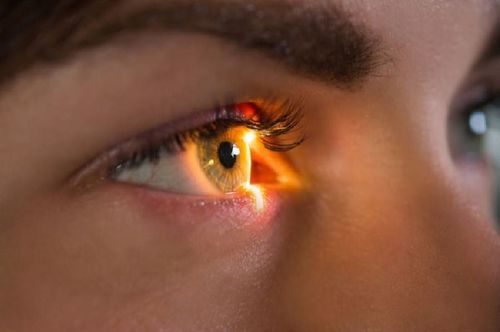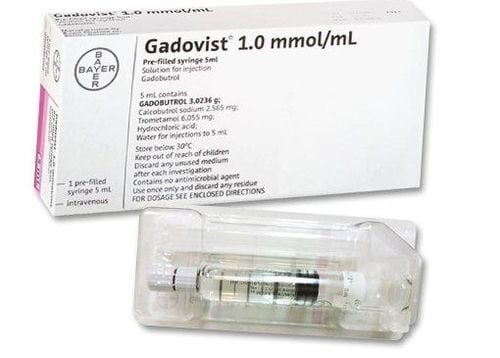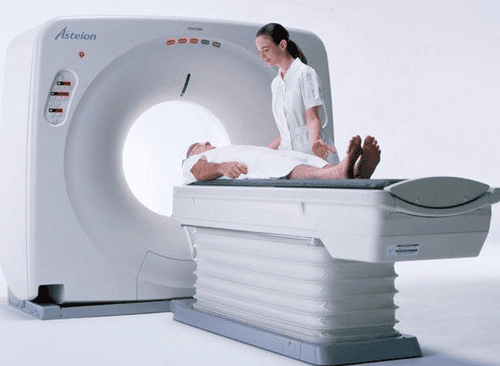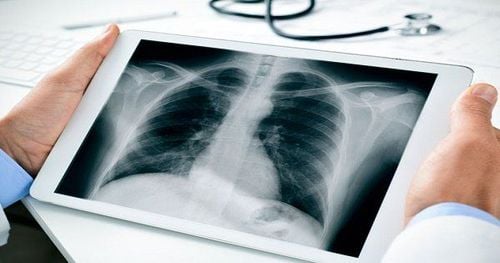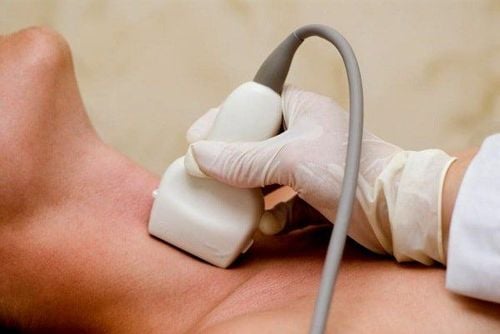This is an automatically translated article.
The article was professionally consulted by Specialist Doctor I Nguyen Thanh Hai - Radiologist - Department of Diagnostic Imaging and Nuclear Medicine - Vinmec Times City International General Hospital. Doctor Hai has more than 20 years of experience in the field of diagnostic imaging, especially in the field of multi-slice computed tomography, magnetic resonance.Orbital computed tomography helps diagnose orbital pathology, helping to evaluate in detail the lesions and abnormal anatomical structures of the orbit. This is a simple, high-precision, non-invasive method that helps diagnose certain diseases that other methods cannot identify.
1. Purpose of orbital computed tomography
Orbital computed tomography without contrast injection is used for the purpose of examining orbital pathologies, helping to evaluate in detail the condition of lesions that have not been identified by other methods, without using contrast agent.Computerized tomography of the orbit is performed in two cutting directions, including: horizontal (axial) direction and horizontal (coronal) direction. Sometimes with multi-segment computed tomography scanners, it is possible to simply capture the cross-sectional direction and reconstruct the image in other directions, still ensuring image quality for accurate diagnosis.
2. Indications and contraindications for orbital computed tomography
Indications for orbital computed tomographyOrbital trauma Inflammatory, infectious lesions Tumor-like lesions. Contraindications: Orbital computed tomography does not use contrast, so there are no absolute contraindications. There are some relative contraindications such as:
Pregnant women, especially in the first 3 months of pregnancy, need to weigh the benefits and risks before taking the scan. For pregnant women, when taking pictures, it is necessary to use a lead shirt to shield the abdomen and reduce the influence of X-rays. Children.

3. Orbital computer tomography procedure
3.1 Preparations Performer: Radiologists and technicians.Means used to take computed tomography include:
Computer tomography machine. Film printers, film and image storage systems. Patient:
The patient is clearly explained about the imaging technique that can be coordinated with the photographer. Before taking pictures, the patient needs to remove objects that can cause image noise such as earrings, necklaces, hairpins... (if any) The patient is too excited, can't stay still, is worried and scared or is in trouble. In case young children may not be coordinated when taking pictures: Manage by using sedatives as prescribed by the treating doctor if there are no contraindications before the scan. 3.2 Steps to conduct Computerized tomography of the orbit in two directions (axial) and horizontal (coronal). For facilities with multi-row CT scanners, it is only necessary to perform the axial section, then reconstruct in the horizontal and other directions while still ensuring the same good image quality as cross sectional image quality.
Step 1: Take the image in the axial direction.
Patient position: The patient lies on his back, the head is in the middle, the patient needs to lie motionless for a few minutes while taking the picture. Perform position shooting, shoot in a plane parallel to the hard palate. Shot in the horizontal direction from the position of the lower border of the orbit to the upper border of the orbit. Thickness of each slice 03mm, reconstruction 0.6-0.625mm. The jump is equal to the cutting layer thickness, spiral cutting. Step 2: Take or image in the horizontal direction (coronal)
Patient position: The patient lies supine, the head is maximally supine or the supine position is maximally supine. Perform positioning capture, following the plane of the section perpendicular to the plane of the transverse direction. Shot in the vertical direction from the anterior tip of the eyeball to the posterior edge of the orbit. The thickness of each cutting layer is 03mm, regeneration 0.6-0.625 mm. The jump is equal to the layer thickness, spiral cutting is recommended. Step 3: After capturing
Determine the standard image, no noise, clear image and print the result in both horizontal and vertical directions, according to both the bone window and the software window.
3.3 Evaluation of results The doctor reads the results and describes the lesions: Describe the location of the lesion, structure, size, spread of the lesion... Compare the computed tomography images and other clinical signs. Provide a diagnosis or diagnostic guidelines. If the results are not diagnostic, other investigations may be suggested. The doctor can provide more professional advice to the patient upon request.

4. Complications in orbital computed tomography
Usually this method does not cause any complications when taking pictures. There are only a few possible cases such as:Young children may not cooperate in the shooting process such as fussy movements that affect the image quality or some people are too nervous, anxious, and scared. scared to take pictures. It can be taken while the child is sleeping, using sedatives or sometimes under anesthesia depending on the case. In cases where the patient is unable to tilt his head for a coronal scan, reconstruction from the cross-sectional direction can be achieved with multi-slice machines, in which case the thinnest helical transverse scan is recommended. , to reproduce the best image. Affects the development of the fetus, so when taking a scan, women need to inform their doctor if they are pregnant or if they are not sure, they need to take a pregnancy test before taking the scan. The procedure of computed tomography of the orbit without using contrast is relatively simple, accurately diagnosing the pathological condition.
Please dial HOTLINE for more information or register for an appointment HERE. Download MyVinmec app to make appointments faster and to manage your bookings easily.
SEE MOREOrbital computed tomography: What you need to know Learn about surgery for apical orbital tumors What does an ultrasound of the eyeball show?





